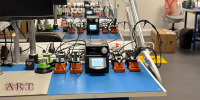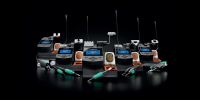
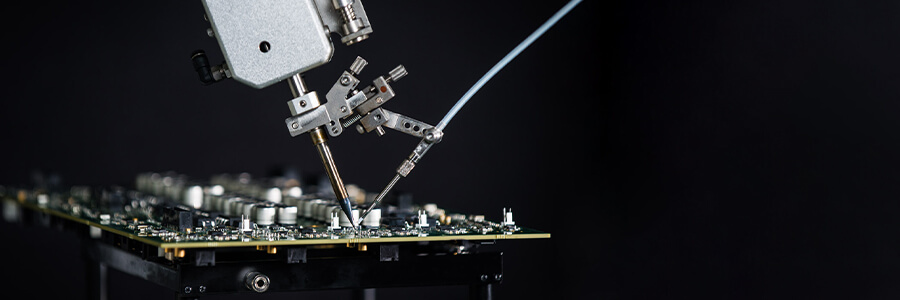

A Sit Down With Our Inhouse R&D Expert, Lloyd Lawrenson - To Discuss Automated Soldering
It is no secret that over the past couple of decades, manufacturing automation has blossomed.
You only need to look at point-to-point soldering processes to see evidence of that.
Thus, CEOs and business stakeholders alike, are always on the hunt for ways to streamline their assembly lines. Whether that be to increase the accuracy or cut time and costs over time.
This is a topic close to the heart of our in-house R&D expert in point-to-point soldering - Lloyd Lawrenson. Through his years with Kaisertech, he has had a keen interest in the way soldering processes are streamlined.
We, therefore, took the opportunity to sit down with Lloyd to discuss the past, present, and future of soldering automation.
Biography Of Our R&D Expert
Firstly, lets provide a quick summary of Lloyds experiences.
He is Kaisertechs in house R&D specialist for point-to-point soldering. Having amassed over a decade of experience, he has helped automate the soldering processes in hundreds of locations across the UK.
Lloyd has a keen interest in robotic soldering, with extensive knowledge of the Apollo Seiko range of automated soldering robots.
Why Should Soldering Processes Be Automated?
As with the development of any product, there needs to be an active problem that they solve. A reason for the product existing.
With automation in electronics particularly, we can see this in four main areas: cost-saving, time-saving, increased accuracy, and repeatability.
“If a company is hand soldering, and they want to improve their assembly processes, there is a limit to the output you can generate,” says Lloyd.
“Each solder operator is different. They use different techniques, prefer different soldering tips, or spend more solder than the other.
“This is where you start to spawn inconsistencies!”
Let’s look into each of these areas of improvement individually then.
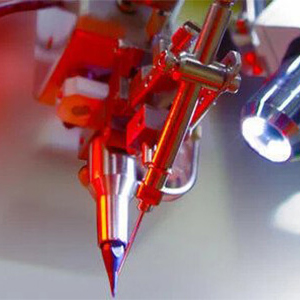

1 - Consistency & Repeatability
There are definitely ways to improve the output of hand soldering operators. Certifications such as the J-STD-001 issued by the IPC can be attained and conformed to.
Yet these are pricey, time-consuming, and will still not bring your human operators to the consistency levels achieved by a robot.
Lloyd echoes this sentiment.
“With a soldering robot, the 1st joint produced is the same as the 10,000th,” he says. “This type of repeatability and accuracy just cannot be replicated by a human - no matter how proficient you are at soldering.
“You are also in complete control of the entire process, being able to track every single metric with complete accuracy. You know how much solder is being used in every single joint as everything is pre-programmed.
“This helps stakeholders to keep better track of their inventory, along with a better indication of how long each of their consumables will last.”
2 - Speed
The speed of your production line is also improved through automation.
Often the physical solder speed of a robot is very similar to that of a highly skilled operator. However, operators get tired toward the end of the day, with their output slowing down as they get nearer to clocking off.
The same is not true of a robot. They are able to maintain constant speeds, with the repeatability to match!
With robotic soldering, there is also the option to utilise 200-watt tips, particularly on the Apollo Seiko range of robots. Due to the power that these tips can produce, the thermal transfer is far superior.
We must also take into account that the time taken between each solder joint is significantly shorter.
Let’s take a look at Apollo Seiko’s SCARA Robot for example. It moves from joint to joint at a rapid rate - often around 6000mm per second.
This occurs consistently whilst in operation. If you were to measure all these factors over time, for high volume work where the robot is being used constantly throughout the day, this equates to a huge time-saving.
Example


The above example illustrates a rough estimate of the time it takes a robot and operator to solder 20 joints. If you took this over the space of a week, the robot is roughly 22.5 hours quicker (based on 9 hour days of solid soldering).
Of course a robot doesn’t stop for breaks, hence why we can use 9 hour days as a comparison.
Manual soldering processes can’t keep up - and if they tried to, you can bet your bottom dollar there would be a significant drop in joint quality.
"Not only will the speed from joint to joint be faster, but they are also incredibly quick to set up and operate" says Lloyd. "Over time, the speed and consistency that robots operate gains you back a lot of time that would otherwise be lost to hand soldering.
"Whereas with people, when they join the company it can take time to get them operating at the level your production requires.
"But with a robot, no skill or in depth training is required. It does not matter how many people join and leave the company, your automated soldering equipment will produce a consistent output."
3 - Accuracy & Cost Saving
Just like in any sector, time is money. Inaccuracies affect the final product.
This can lead to reworks, repairs, system failures and more. Each of these requires more time and therefore has a negative financial impact.
“It can be easy for a human to make a mistake whilst soldering,” Lloyd explains. “Errors can be costly, as one solder joint is all that is needed to cause a catastrophic error.
“By automating your point to point soldering you eradicate these issues with product failure. When you consider that a lot of the companies we sell into, work on vital equipment such as ventilators or defibrillators.
“There needs to be complete confidence in how the process assembles the PCBs that go into this type of equipment. Lives are at stake in these instances.
“Automated soldering equipment gives you that confidence, as robots do not make mistakes.”
And these soldering robots take up less room than you would think. They are often within an enclosed box, being capable of sitting on top of your workbench with a small footprint.
Often the transition means that you can reduce labour costs thanks to the added efficiency a soldering robot provides.
Who Are The Early Adopters Of This Technology?
When we look at the current industries that use this type of equipment, some are far more agile in their manufacturing approach than others.
On a whole, the automotive industry has always led the way with automated processes.
With this industry being worth over £15.3 billion in value to the UK economy, there is no wonder that they are always striving to add speed and reliability to their operations. Over 850,000 cars were manufactured in the UK in 2021.
There are even projections that the CAV market (self-driving vehicles) could be worth up to £41.7 billion by the end of 2035.
“The automotive industry has always been ahead of the game when it comes to automation,” says Lloyd. “Everything is about speed and accuracy, which is precisely what automated machinery provides.
“Every bolt in a car has a record, set with an exact torque to a set number of rotations. Amazingly this kind of precision has yet to translate across to other industries, although they are definitely beginning to automate.
“When looking at the automotive industry, they automate everything, even down to the hand tools. Where any soldering is being done, a robot is 100% being used.”
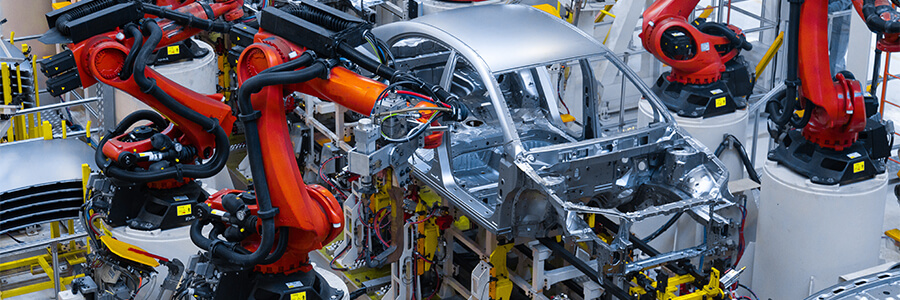

How Easy Is It To Switch Over To An Automated Process For Point To Point Soldering?
Now that you have heard of the benefits, you may be wondering how simple it is to move across to an automated soldering system.
This equipment is not cheap and therefore requires a protocol to enable us to scope out the right machine for you. Here is the process we go through:
Step 1 - Identify
We first need to see the application, as no one process is ever the same. Often this can be done by sending through pictures of the current set-up or visiting the site in person.
It is never a given that automation is the best way forward. So, we never state outright that we have a solution for every circumstance. But through visual means, we will gauge the extent to which we can assist.
If you require the signing of NDAs we will ensure all is in place before we see any physical parts etc.
Step 2 - Testing
Once the products have piqued your interest, the next step is to demonstrate the capabilities of the Soldering robots.
It is often required to send us parts for physical testing. This enables us to collaborate and to hit the desired cycle time. We will send back video feedback and all tested parts.
This collaboration is crucial to ensuring the programming of the right profiles - along with selecting the best machine for the desired application.
Step 3 - Batch Testing
Before purchasing, some customers require batch testing to reinforce the accuracy and repeatability benefits of the automated equipment.
This is free of charge to prove the concept.
Step 4 - Visual Demonstrations
At the end of the day, like all capital equipment, soldering robots are a big investment. Before purchasing you may require a visual demonstration to see how the robot operates and alleviate any further concerns you may have.
Our Eastleigh office demonstration room provides the perfect location for this, with Lloyd walking you through the operation and functionality of the Apollo Seiko systems.
Should you decide to go ahead with the purchase, we will also assist in the programming and aftercare of the robot if required.
What Is The Future - Laser Soldering
When we look at the current industries that use this type of equipment, some are far more agile in their manufacturing approach than others.
On a whole, the automotive industry has always led the way with automated processes.
With this industry being worth over £15.3 billion in value to the UK economy, there is no wonder that they are always striving to add speed and reliability to their operations. Over 850,000 cars were manufactured in the UK in 2021.
There are even projections that the CAV market (self-driving vehicles) could be worth up to £41.7 billion by the end of 2035.
“The automotive industry has always been ahead of the game when it comes to automation,” says Lloyd. “Everything is about speed and accuracy, which is precisely what automated machinery provides.
“Every bolt in a car has a record, set with an exact torque to a set number of rotations. Amazingly this kind of precision has yet to translate across to other industries, although they are definitely beginning to automate.
“When looking at the automotive industry, they automate everything, even down to the hand tools. Where any soldering is being done, a robot is 100% being used.”
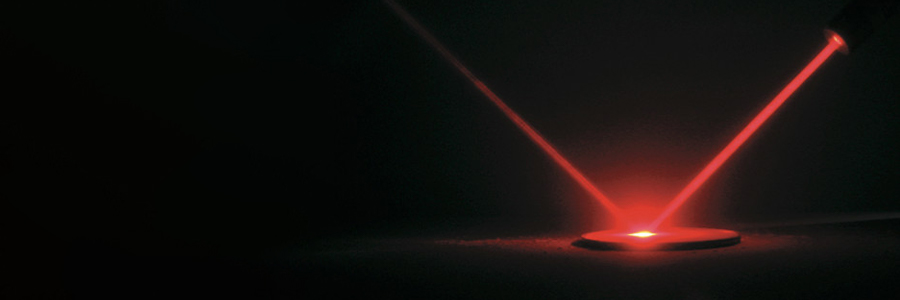

To Conclude...
As Lloyd has eluded to, point to point soldering has currently reached a point in time whereby it is essential for modern assembly processes. However, the automated equipment still has room to evolve - specifically when you look at the exciting advancements into laser soldering over recent years!
If this article has peaked your interest for automating your soldering process, feel free to get in touch with Lloyd here. He can discuss our migration process in further depth.


